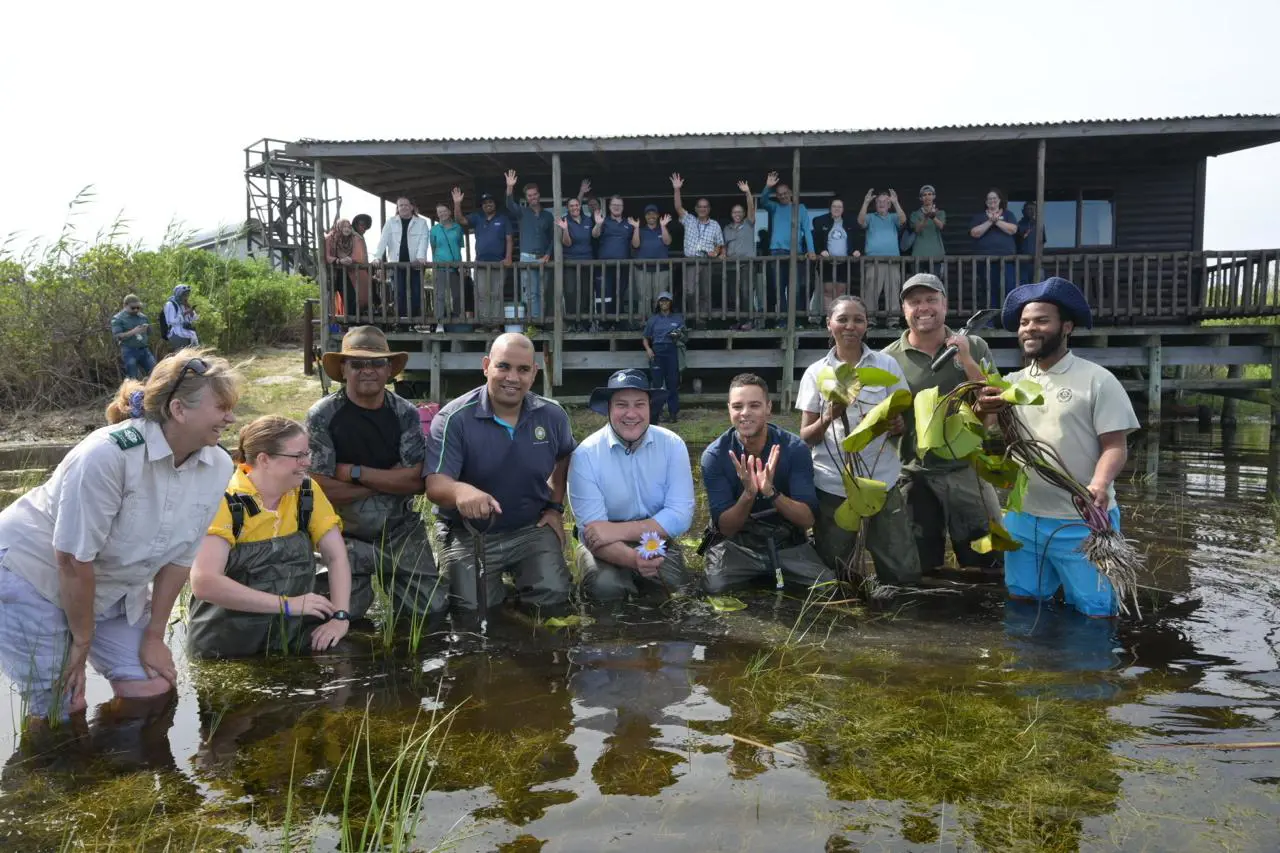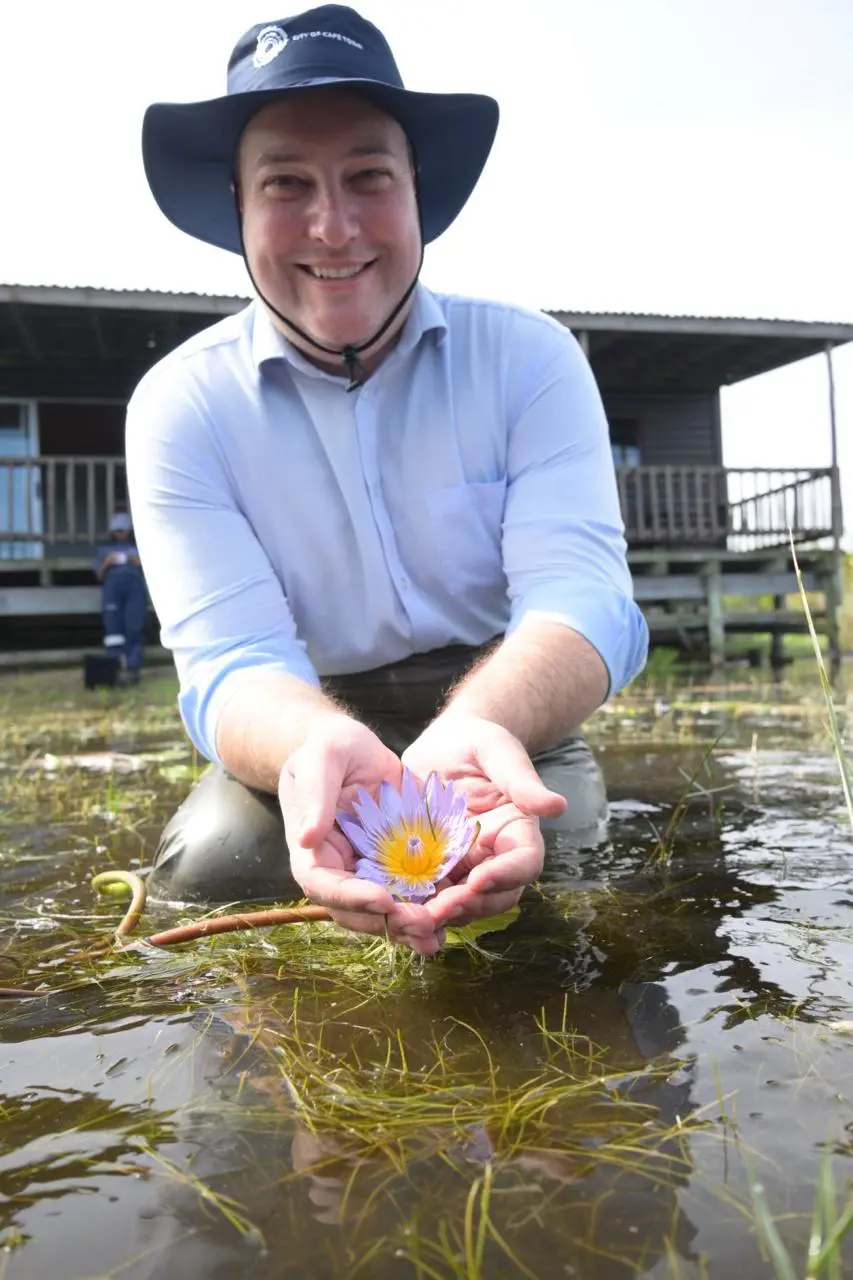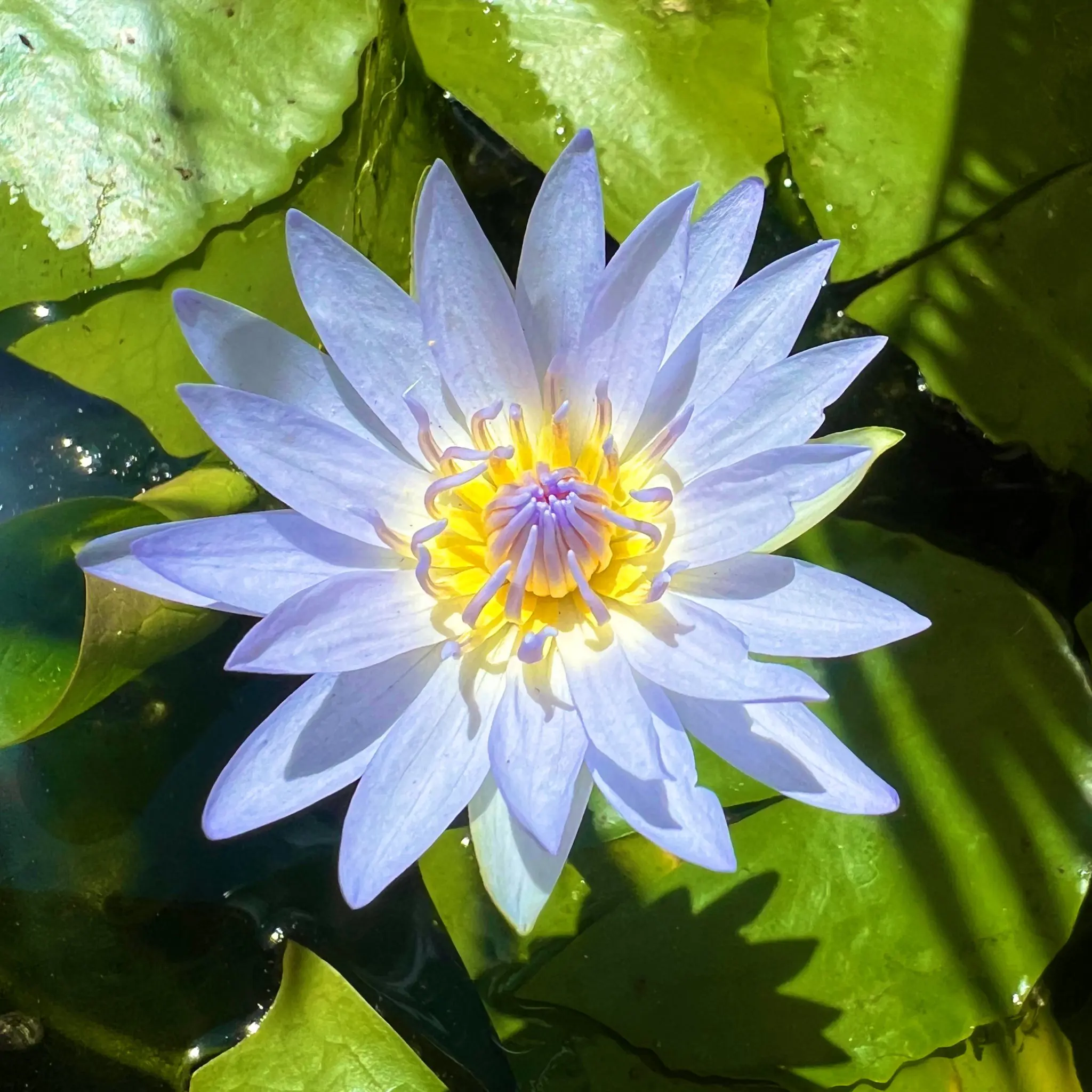'Earthshot Lily' returns to Cape Flats roots as conservation efforts flourish
The Cape Water Lily, which became extinct in the mid-1900s, is the latest addition to the bustling biodiversity of the Rondevlei section of the False Bay Nature Reserve, reintroduced during the prestigious Earthshot Prize.

Councillor Alex Landsdowne, City of Cape Town Mayor Geordin Hill-Lewis, and Earthshot Prize trustee Zoë Ware embrace the reintroduced Cape Water Lily. Picture: Supplied
JOHANNESBURG - A striking flower previously declared extinct has had its legacy revived on the wetlands of the Cape Flats, a significant feat for conservationists, and just in time for the Earthshot Prize.
Now dubbed the "Earthshot Lily", the Cape Water Lily (Nymphaea nouchali var. caerulea) is the latest addition to the bustling biodiversity of the Rondevlei section of the False Bay Nature Reserve.
A common feature on the Cape Flats until the mid-1900s, the lily became locally extinct in the area due to loss of habitat, pollution, augmentation and historical harvesting for the cut flower trade, Cape Town councillor and Deputy Chairperson of the Advisory Committee: Water Quality in Wetlands, Waterways and the Coastal Environment, Alex Landsdowne said at the historic replanting earlier this week.
ALSO READ:
Not only was this a "symbol of our commitment to wetland conservation in Cape Town", Landsdowne said future generations would finally be able to enjoy the endemic flower.
"This species will enhance the wetland ecosystem where it occurs and support many other important species," Landsdowne added.

The team involved in reintroducing the Cape Water Lily to the Cape Flats region. Picture: Supplied
DECLINE OF NATURAL HABITATS
A study published in Nature Ecology and Evolution in 2019 cited South Africa's Cape Provinces as having recorded the second most extinctions in the world, topped only by Hawaii. The study found sobering extinction rates across the globe, with plants and seeds particularly vulnerable. Current estimates are that extinctions are ramped up 500 times - almost twice as much as rates described before 1900.
Continued population booms and associated agricultural and urban expansion pose potentially devastating threats to biodiversity in the Cape Floristic Region, with the Critical Ecosystem Partnership fund saying 33% of the Cape Peninsula is invaded. The fund projects that over the next two decades, at least 30% of the region's natural vegetation could be invaded, putting 750 species at risk over the next 50 to 100 years.
Invasive alien plants also pose a significant threat to the Cape Floristic Region, along with fires, grazing, and climate change.
The City of Cape Town said of the 20 vegetation types in the city, 11 are critically endangered, and seven only occur naturally in the region.
"Our biodiversity is our natural heritage and it is unique and irreplaceable. The nature reserve network helps make our city sustainable and resilient, through the ecosystem services provided by nature."
Initiatives such as the Earthshot Prize, started by Prince William four years ago, are a hopeful start to preserving the biodiversity heritage the region enjoys. Earthshot took place over the past week in the city, the first time the environmental awards were hosted in Africa.
"This lily is in many ways a symbol of the legacy Earthshot leaves in our city – giving recognition to local climate and conservation heroes and helping them scale their work so that it can make a big impact. Residents of Cape Town will be able to view the Cape Water Lily as they re-establish in our free-access nature reserve," said City of Cape Town Mayor Geordin Hill-Lewis.

Cape Town Mayor Geordin Hill-Lewis holds a Cape Water Lily, now dubbed the 'Earthshot Lily'. Picture: Supplied

A close-up of the Cape Water Lily. Picture: X/@alexlandsdowne
"This further supports the City of Cape Town’s international obligations towards biodiversity conservation as a Ramsar City Wetland and a role model city in the UN decade of ecosystem restoration," he added.
A Ramsar Site earmarks wetlands as internationally important, with more than 2,000 sites across 160 contracting parties around the world.
The Cape Water Lily is an instantly recognisable flower, with its sky-blue petals and golden yellow stamens synonymous with ethereal fairytale ponds, blooming from spring until the end of summer. Residents can enjoy the flowers when they open early in the morning, as they close late in the afternoon and into the night.
They were often collected and eaten, even finding themselves in Cape Malay curries around the 1800s. It was a significant part of Cape Town's natural heritage, even receiving special mention in the Official Handbook of the City of Cape Town in 1909.